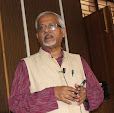Prominent author, Kama Maclean, mentioned my January
21, 2001, report in Hindustan Times, in her footnote No. 76 (Sept 2009,
page 341) in a prestigious research
paper, also Chapter One of a book now.
Here’s note as mentioned in that paper:
This paper was presented in an earlier form at the
Annual Conference on South Asia at the University of Madison Wisconsin, 2005,
with thanks to the panel participants and audience for their feedback and comments.
It is an extension of the arguments presented in Kama Maclean, Pilgrimage and Power: the Kumbh Mela in Allahabad, New
York: Oxford University Press, 2008, chapter one.
Sample the beginning of the paper:
SEEING,
BEING SEEN, AND NOT BEING SEEN
Pilgrimage,
Tourism, and Layers of Looking at theKumbh Mela
Kama Maclean
Introduction
The black
and white photograph is of a group of peasant women, wrapped in coarse woolen
shawls against the January cold. They look at the camera blankly—or is that
with hostility at the camera’s intrusion? Deliberately drained of color, the
image seems as though it could have been taken a century ago. One woman, the
central figure, is wearing dark sunglasses, and has been no doubt chosen as a
focal point because her middle-class accessory stands out as the image’s only
sign-post to modernity. The photograph, ‘‘Kumbh Mela Women,’’ was taken at the
Allahabad Kumbh Mela in 2001. It is copyrighted. It is ‘‘collectable,’’ and
apparently, a wise addition to an investment portfolio. It is also an example
of how images of the traditional (often synonymous with ‘‘the religious’’) have
become desired, frame-able objects, fine art mementos to our own modular, more
complete modernity. It was images such as this (and this is a comparatively
benign example) that raised along-standing issue for managers of the Kumbh Mela
in 2001: did photographers have a right to enter the mela grounds and take
photographs as they pleased? How did the presence of international media crews affect
the festival, and the ways in which people perform their rituals?
Notes:
76. Roy, Arindam, ‘‘Scribes vow to shun Kumbh
administration,’’ Hindustan Times, January 21, 2001; Rahul Bedi, ‘‘Hindu Sect
forces out Westerners,’’ The Age, January 13, 2001, p. 22.
Link of the Research Paper:














